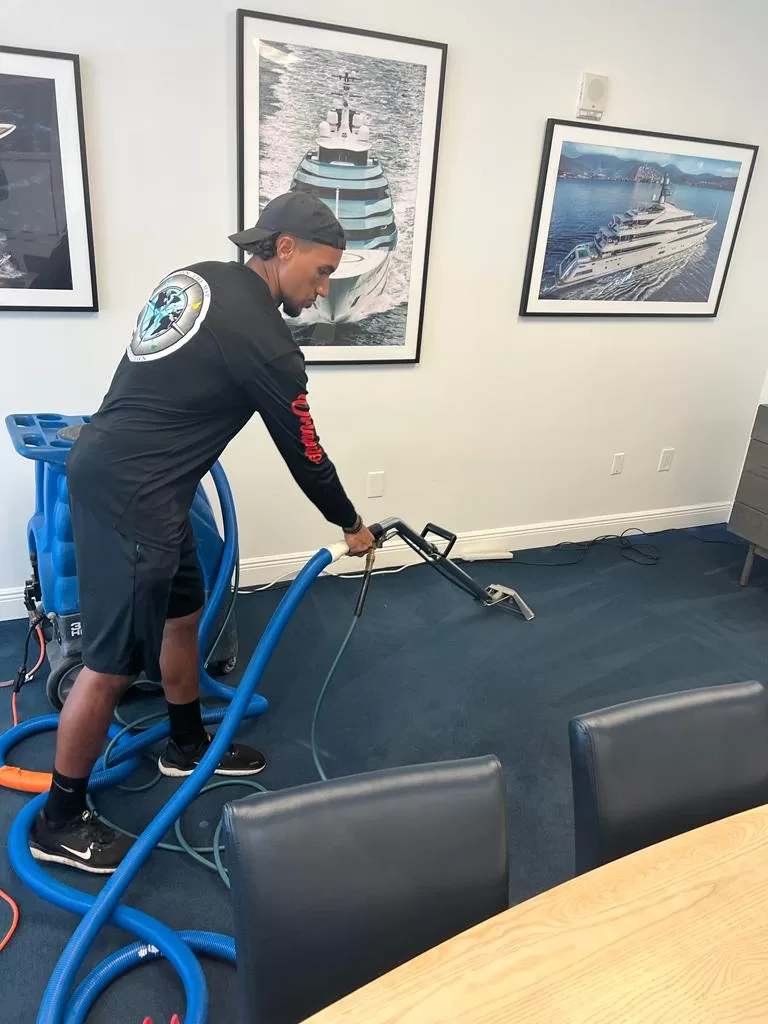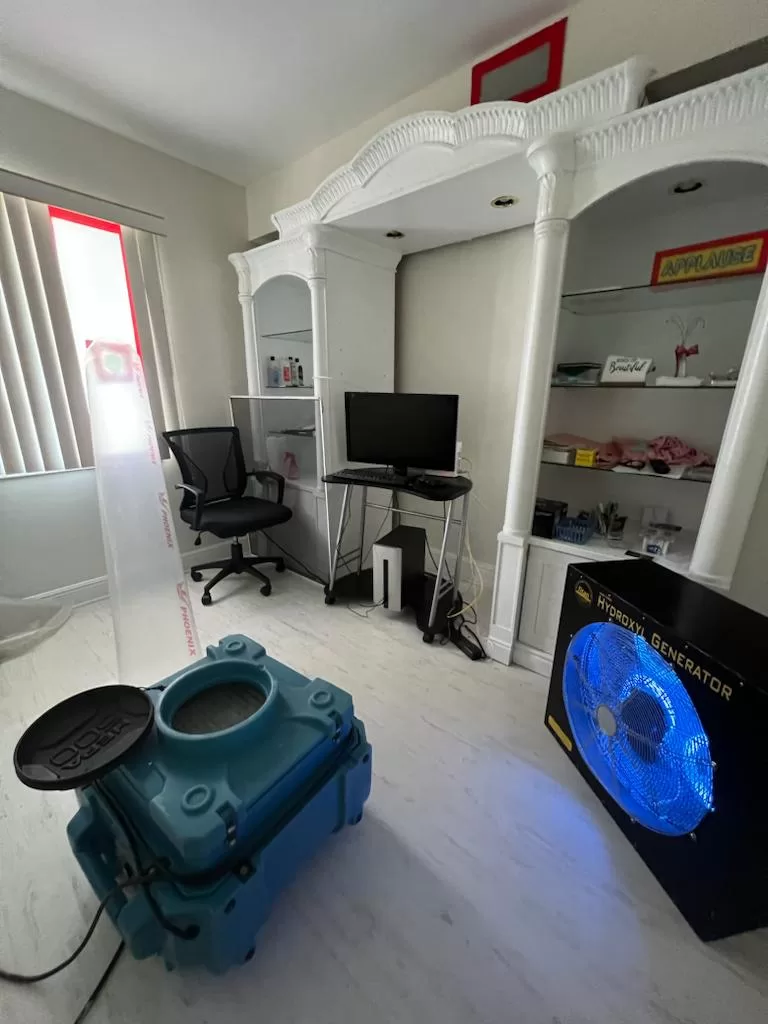Water damage is the one thing you never want to experience. As a homeowner or business owner, there are a few things that can happen that will cause water damage. The 3 main types of water damage are clean water, grey water, and black water. While each type has its unique category and causes different issues, they all require professional attention from restoration experts like On The Map Restoration to help mitigate any further damage. OTM Restoration was recently in Cape Coral and Englewood Florida assisting clients in the remediation process after Hurricane Ian.
Water damage can lead to mold growth and mildew, which is unsightly and unhealthy for you and your family members. Mold spores are airborne, so they can quickly spread throughout your home by simply moving around in its presence with little effort! When this happens, breathing becomes difficult because of allergies caused by these tiny organisms inhaled into the lungs during routine activities like sleeping at night when everyone else has gone upstairs already (or downstairs).
 Water Damage | Know The 3 Types: Clean Water, Grey Water, and Black Water. On The Map Restoration remediation process in action. Damaged wall exposing burst water pipes after flood in Englewood Florida.
Water Damage | Know The 3 Types: Clean Water, Grey Water, and Black Water. On The Map Restoration remediation process in action. Damaged wall exposing burst water pipes after flood in Englewood Florida.
The 3 Main Types of Water Damage
Clean Water
Clean water is the least harmful type of water damage, referred to as “clear” or “white” water. Even though it doesn’t pose any health risks, clean water can cause significant structural damage to your home if not dealt with quickly enough. The cause is usually a leak in your plumbing system, such as a toilet left running or a leaky faucet.
Grey Water
Grey water is when you have a clogged drain, leading to untreated sewage seeping into your home through cracks in the floorboards, walls, or ceilings. While this can be just as damaging as black water (see below), grey water tends to contain fewer bacteria. However, it still poses several risks for anyone who comes into contact with it. There is a possibility of getting sick due to exposure, breathing in harmful fumes, or exposure to toxic chemicals used in pesticides and cleaning products that could be absorbed through the skin when removing mold.
Black Water
Black water is the most dangerous type of sewage backup because it contains a high concentration of harmful bacteria and other contaminants. It usually comes from your toilet or kitchen sink when they overflow, which can happen when there’s a clog or blockage in your pipes.
 Water Damage | Know The 3 Types: Clean Water, Grey Water, and Black Water. Damaged wall exposing burst water pipes after flood in Englewood Florida after Hurricane Ian.
Water Damage | Know The 3 Types: Clean Water, Grey Water, and Black Water. Damaged wall exposing burst water pipes after flood in Englewood Florida after Hurricane Ian.
Remediation Process for Water Damage
The different types of water damage can be categorized based on the kind of water. These include clean water, grey water, and black water. Clean water is harmless and contains no contaminants that could damage your property or cause illness to anyone in contact with it. Grey (or dirty) water includes some bacteria or other contaminants that may not be dangerous but still require cleaning before entering the sewer system. Black (or sewage) is very dangerous and should never be handled without proper equipment by a professional!
Here’s a quick breakdown:
Clean Water Damage
Clean water refers to any liquid that doesn’t contain harmful substances such as mold spores or bacteria like E-Coli which could make you ill if ingested. For example, rainwater would fall under this category because there’s nothing harmful about it, so long as no one drinks from puddles on the street after it rains!
The most common type of water damage is clean water because it usually originates from leaky pipes or burst faucets. It can result from freezing temperatures and plumbing malfunctions or simply neglecting regular maintenance on your home’s pipes and roofing system. This damage is easy to spot as it will appear as dark spots on walls and floors and be wiped away with a cloth or towel. You can clean the water damage with soap and water, but you should always call a professional to ensure there isn’t any mold.
Grey Water Damage
A grey classification means that small amounts (usually less than 10%) might contain things like fecal matter, which could pose a health risk if ingested but won’t necessarily make you sick if touched directly. Please wash your hands thoroughly after handling any traces of this water since they will likely spread through physical contact until washed off properly!
Grey water is the most common type of water damage. It contains water contaminated with sewage, chemicals, or other hazardous substances and comes from various sources, including sinks, showers, and washing machines. While grey water doesn’t pose as much risk to your health as black or clean water does (it contains less toxic material), it can still cause severe problems if you don’t take care of it correctly.
Black Water Damage
Black Water refers to any liquid that contains harmful substances such as mold spores or bacteria like E-Coli which could make you ill if ingested. For example, sewage and groundwater flooding would fall under this category because it contains human waste or other biohazardous material.
Black water damage is the most severe type of water damage. It refers to sewage containing bacteria, viruses, and other harmful pathogens. Sewage can enter your home or business through any number of sources, including pipes that leak into the basement or septic tank overflow.
Black water damage requires specialized equipment and training to clean up. Suppose you attempt to clean it yourself using ordinary household products like bleach or detergent. In that case, you could make matters worse by spreading harmful pathogens throughout your home or business and exposing yourself to them! Cleaning up black water should be left in the hands of professionals with access to the necessary tools for adequately handling this kind of spill.
 Water Damage | Know The 3 Types: Clean Water, Grey Water, and Black Water. OTM Restoration cleaning up a clients home in Cape Coral Florida.
Water Damage | Know The 3 Types: Clean Water, Grey Water, and Black Water. OTM Restoration cleaning up a clients home in Cape Coral Florida.
Consult the Experts at On The Map Restoration
Homeowners need to understand the difference between clean water and grey water. Clean water comes from a kitchen sink or bathtub, while grey water results from your bathroom fixtures (toilet, shower drain). Black water is not something you want anywhere near your home. It seeps into the ground and contaminates soil and groundwater.
You should consult with an expert before attempting any repairs yourself. A professional restoration company can help save you time, money, and headaches by assessing the damage in its entirety—and they’ll have access to all of the equipment needed to restore your property to its original condition quickly and efficiently.
We hope this information has helped you to understand the three types of water damage better. If you are experiencing any of these problems or have questions about how we can help, please call us at 800-416-5986 or contact us online. We will be happy to answer any questions regarding the restoration process.
OTM Restoration experts are on call and are available 24/7 to provide the sensitivity and professionalism required to handle residential and commercial water damage issues.
For a free consultation and quote, contact us at 800-416-5986 today!


Recent Comments